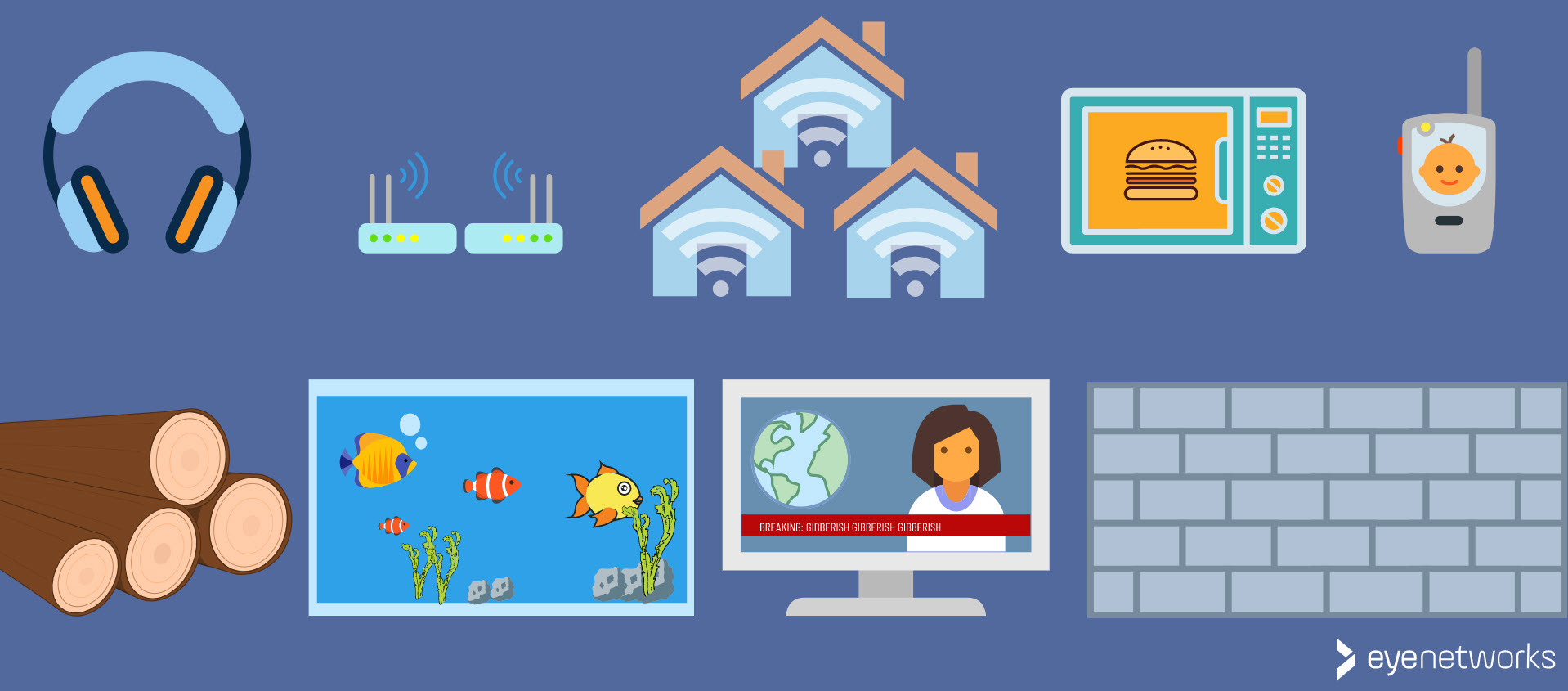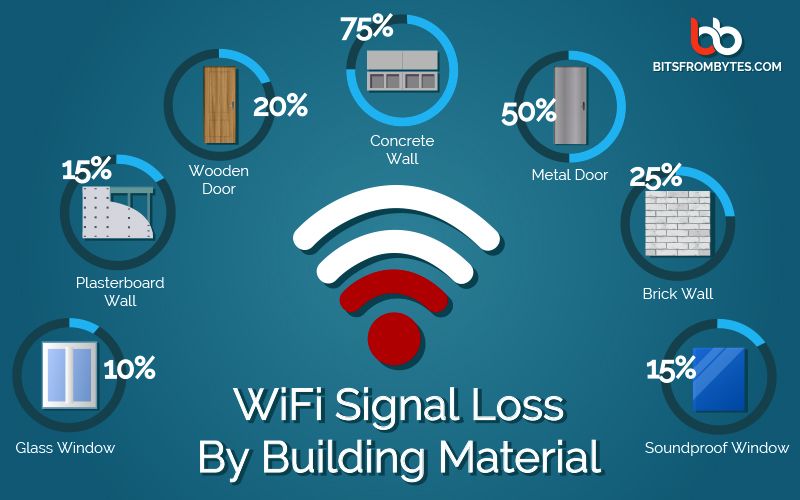
Signal Disturbances and Interference
One important reason to choose newer equipment that supports the 5 GHz frequency band is that the signals on this band have a shorter range and are therefore less likely to create and pick up interference from networks than older equipment using the 2.4 GHz band.
1. Your Neighbor's Network

When many networks are located closely together, for example in apartment buildings, this will affect the wireless capacity. For equipment on the 2.4 GHz band, neighboring networks are the single largest source of interference on the wireless network.
2. Separate Wireless Networks in Your Own Home
If you have multiple wireless networks in your home that are set up on different pieces of equipment – this can be even more disruptive than your neighbor's network. If you need to have logins for the wireless network with different access levels, we recommend setting up a guest network with its own network name (SSID) on the same router or access point as the primary network.
3. Bluetooth
Wireless devices such as headsets, keyboards, and mice can interfere with the Wi-Fi signals. Bluetooth uses a technology called frequency hopping, which means it skips around the 2.4 GHz band, up to 1600 times per second(!)
When equipment that uses Bluetooth, jumps into the frequency range of equipment that uses Wi-Fi, it can therefore ruin some of the Wi-Fi traffic and create delays. As it jumps so often, actual impact on Wi-Fi will be highly variable, making such scenarios rather hard to troubleshoot.
Worst case, your Wi-Fi access point will automatically change the channel to avoid the interference – a misguided strategy, as Bluetooth will hop through all the channels that are used for Wi-Fi anyway, and this may cause you to lose more Wi-Fi traffic. Old devices and computers in particular will need several seconds to reconnect if the access point changes to a different channel.
4. Baby Monitors, Walkie-Talkies and Other Radios
Do you have baby monitors, walkie talkies, or maybe a radio locator to keep track of your pets or keys? Such equipment tends to use the same frequency as the older Wi-Fi standards 802.11 b/g/n and will therefore interfere with the 2.4 GHz band.
Traditionally, this type of equipment does not use Wi-Fi and uses the entire frequency band without any regard to other communication on the same frequency.
5. Microwave Oven
Microwave ovens use electromagnetic waves of 2.4 GHz to heat food. Unfortunately, the older Wi-Fi standards, 802.11 b/g/n also use electromagnetic waves at 2.4 GHz, but with far weaker transmit power.
Although all microwave ovens are well covered, there will always be some degree of "leakage" of waves – a slight leak is not dangerous to humans, but:
- Most microwave ovens are at about 1000 W.
- Most Wi-Fi access points can transmit a maximum of 0.1 W.
Therefore, it does not take much of a leak for the 2.4 GHz band in the area to become unusable.

Physical Obstacles to the Wi-Fi Signals
With shorter range, equipment on the 5 GHz band is more dependent on the having a clear line of sight between the wireless access point/router and the clients; devices and computers connecting to the network.
Some obstacles are simple to remove, and in some cases you may be able to move the access point away from the obstacles. Building materials in the home are harder to address, however. The solution we recommend to ensure coverage in such cases is a mesh network of several wireless access points that can work their way around the obstacles.
6. Concrete and Masonry Walls
Different building materials block wireless signals to very different degrees. Wi-Fi signals are most weakened by having to go through thick walls, especially reinforced concrete.
7. Thick Timber Walls
Regular wooden walls cause some signal loss, but not a great deal, as you can see in Wi-Fi Signal Loss by Building Material. However, timber walls have proved to be a significant obstacle to wireless signals.
8. Metal
Is your router or other wireless access point placed inside a metal cabinet? Get it out of there if you can!
9. Water
Do you have a really big aquarium? Here the wireless signals will also struggle to get through.
10. The TV
Perhaps the most common cause of weakened Wi-Fi signals – don't place your router or other wireless access point behind the TV!

